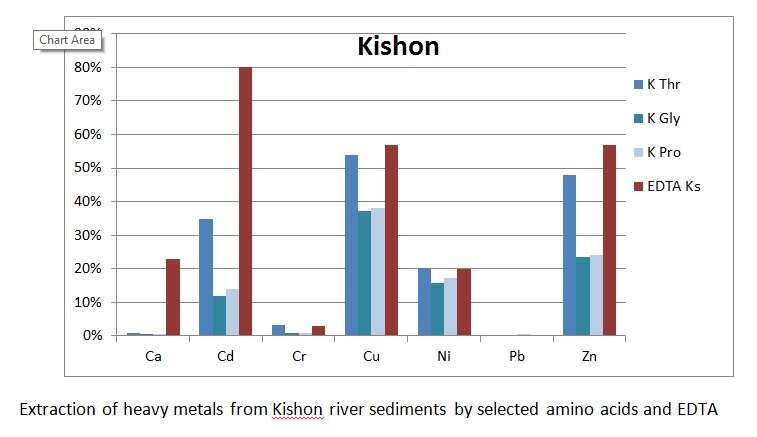
The Greenest Process: Amino Acids as New Heavy Metal Chelators for Environmental Remediation
2Environmental Engineering, Tel Aviv University, Tel Aviv
Remediation of soils that are contaminated with toxic heavy metals is a global challenge. Powerful synthetic chelating agents such as commonly used EDTA, are applied for extracting heavy metals from contaminated soils. However, EDTA is not biodegradable, and interferes with environmental biochemical processes. Therefore search for powerful biodegradable chelators is extensively studied worldwide.
In the present research, we explore natural amino acids as the most environmentally-friendly chelators for soil remediation. Amino acids are well-known to chelate metal ions in nature, are non-toxic, inexpensive, and even enhance plant growth. So far we present the first comprehensive study of exploring amino acids as potential chelators for the environmental remediation processes.
Screening of various natural amino acids allowed us to find the best candidates for our goal, and to observe structure-functional correlations between specific structural fragments (and properties), and metal extracting efficiency. Also, idea of recovery and re-use of amino acids was examined.
Both the stunning advantages and the curious faults of amino acid application as chelators in soil remediation will be discussed in the present poster.


Powered by Eventact EMS